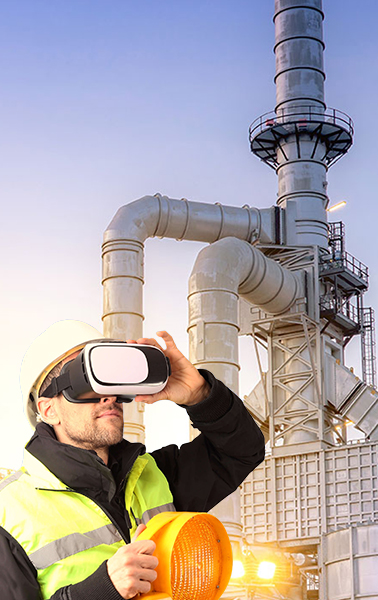Digital Reality: Transforming the Oil and Gas Industry
The oil and gas industry over the years has undergone massive changes but the challenges to produce for commercial uses remain the same. These challenges are extensive and varied, ranging from safety to industry regulations to the fluctuating markets as well as the physical challenges. However, the increasing rate of adoption of Digital reality has had a far-reaching impact on the oil and gas sector. Whether deployed for project design, training, maintenance or handling accidents, Digital Reality is playing a crucial role in helping the industry combat these challenges in myriad ways.
The rise of Immersive technology in Oil and Gas
As the industry is beginning to realize the vast array of benefits offered by the Simulation technologies, the pace of operational change in the sector has dramatically advanced. The global AR and VR share in the Oil and Gas industry was valued at $106.7 Million in 2018, and is estimated to reach $943.4 Million by the end of 2027, growing at a CAGR of 27.4% during the forecast period. Regionally, Middle East and Africa were the highest contributors to the global AR and VR market for Oil and Gas in 2018 and the trend is expected to be the same till 2027. North America also proved to be a profitable region for this market with the US spearheading this growth. Additionally, the rapid adoption of AR and VR is forecasted to add $15 Trillion to the global economy by 2027.
It is the interactive nature of these simulations that led to an otherwise change resistant industry, to quickly adopt the technology. In fact, in the year 2018, the energy and utilities industry alone contributed 17% to the smart glasses shipments globally. The deployment of AR and VR in the Oil and Gas industry has offered a host of benefits to industry players which include, geographical mapping, remote access to operations, safety enhancements, cost effectiveness and portfolio expansion. A report by McKinsey states that the with the adoption of Immersive technology, the sector can reduce its capital expenditure by 20%.


AR and VR uses in the Oil and Gas Industry
Such benefits and elevated experiences of Digital Reality finds many practical applications in the Oil and Gas Industry. AR headsets assist in projecting hands free instructions for the technicians during inspections and maintenance. The animated instructions boost efficiency and reduce errors by displaying checklists and data. These headsets when equipped with two-way communication also help remotely located experts to communicate with the technicians. Equipment such as AR glasses provide a detailed superimposition of a machinery part or its working mechanism that helps increase worker accuracy, efficiency and safety. This technology also helps engineers and technicians present at oil plants to carry out repairs in real-time. On the other hand, Virtual Reality assists in conducting workforce training without any theoretical lessons and without the need to travel to remote locations. Using VR headsets, trainees interact with industrial equipment and processing plants virtually. Sensor enabled VR applications enable engineers to virtually and remotely survey generators, pumps, compressors and other on-site installations in real-time. In the event of equipment failure, technicians can perform an initial assessment of the problem through immersive headsets. VR is also being used in the industry to simulate digital twins of equipment to provide remote access to experts. Geoscientists are using VR to envision seismic activity and to drill virtually. Additionally, VR enhances the possibilities of product development, whereby integration with 3D printing helps in the development of prototypes at great speed.
The way forward for the Oil and Gas industry with EDIIIE
These are just some of the many applications of immersive technologies that affirm the huge transformation that the Industry as a whole is undergoing. And at EDIIIE, we are the ones spearheading this transformation process through our extensive experience with the sector and technology innovation in the vanguard.







.png)































